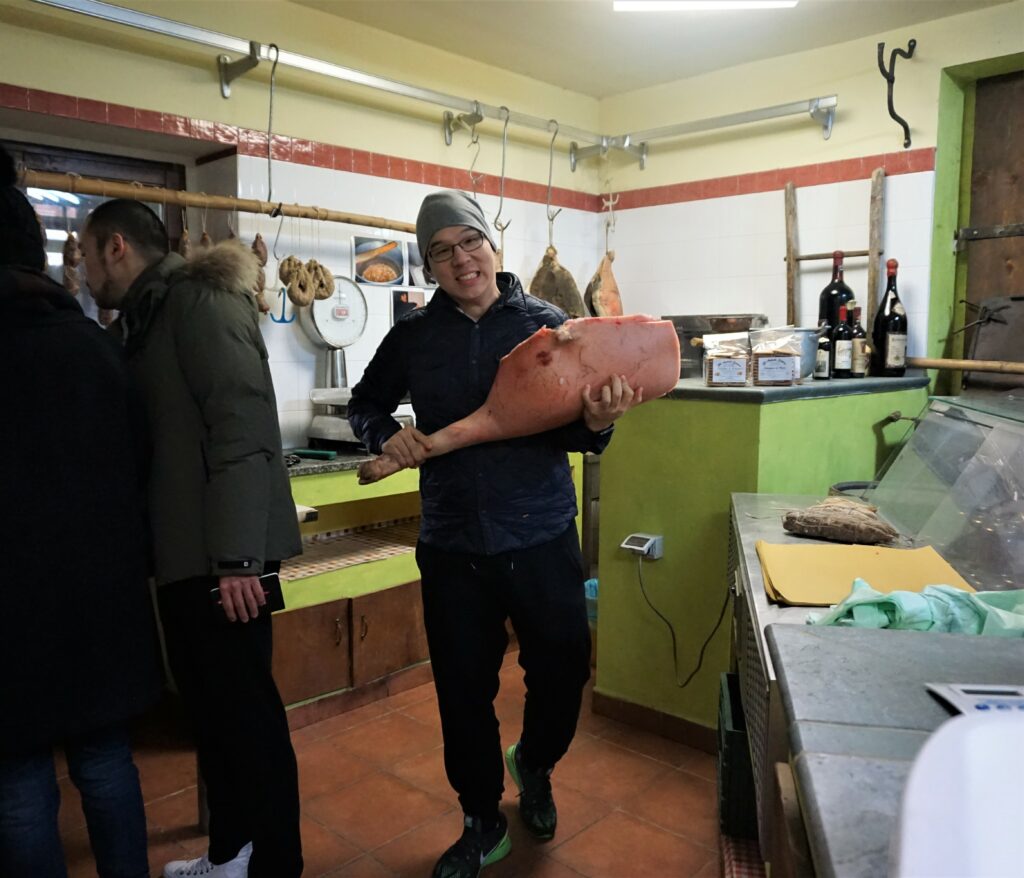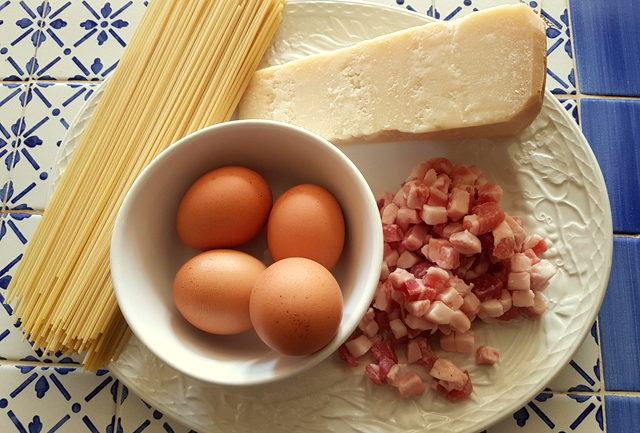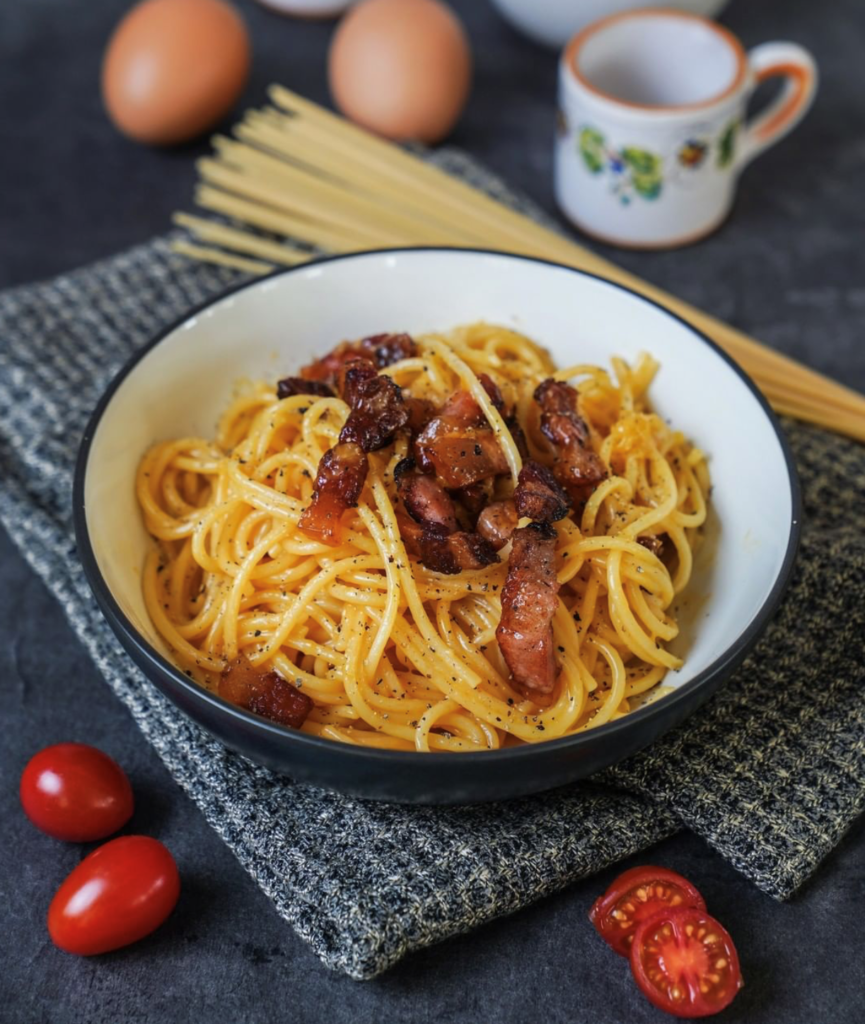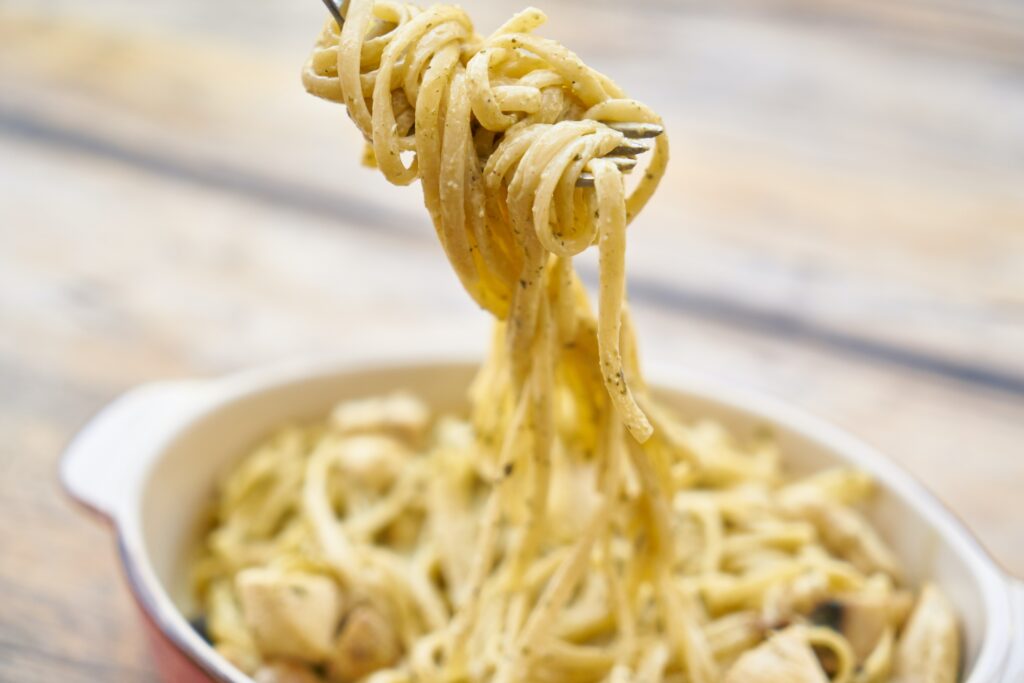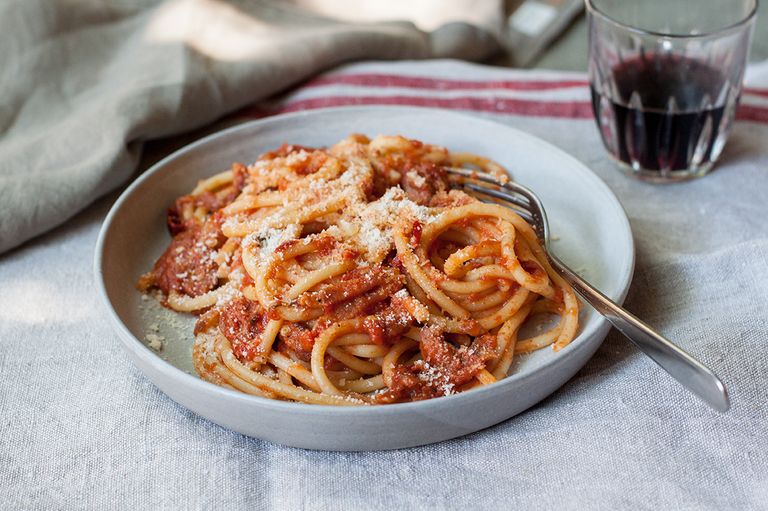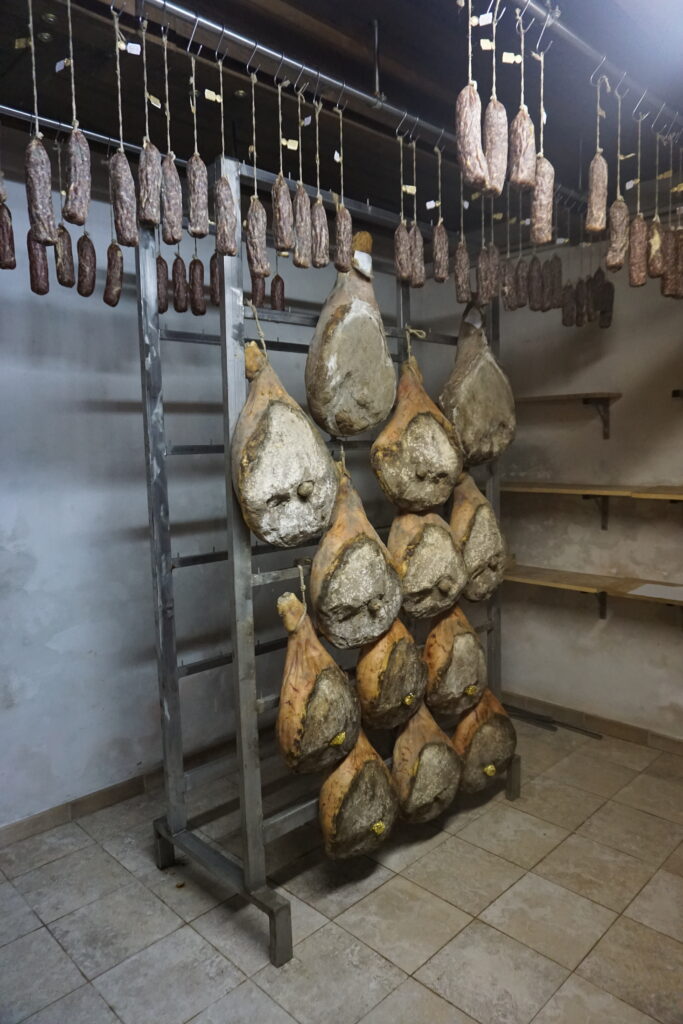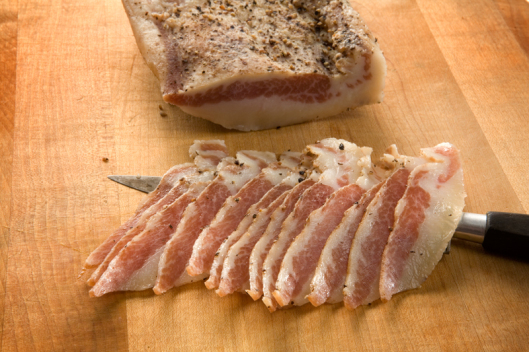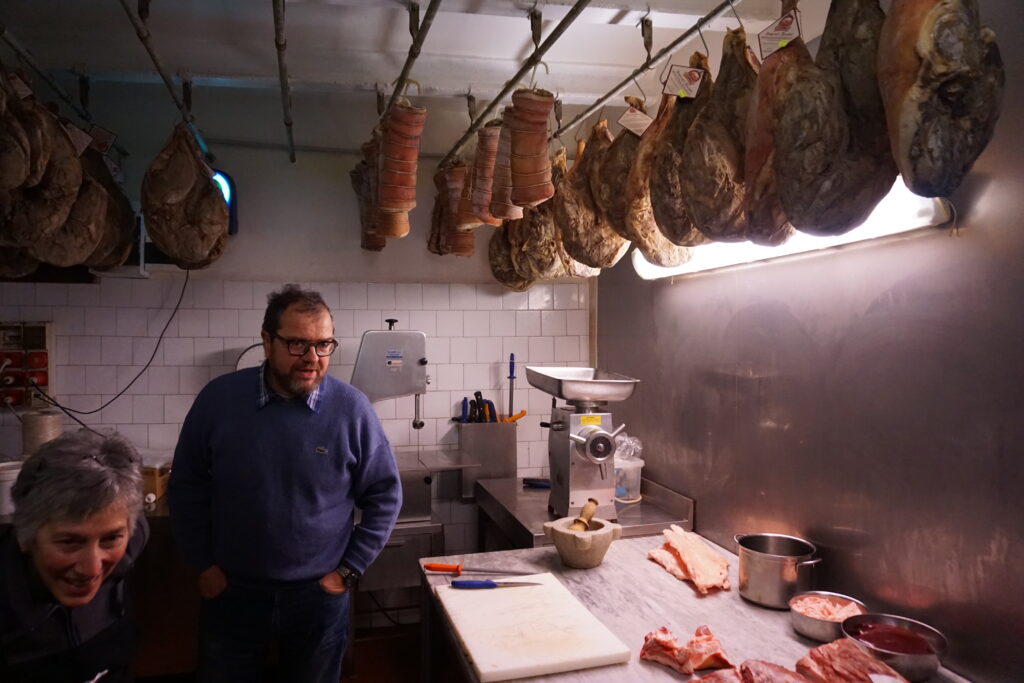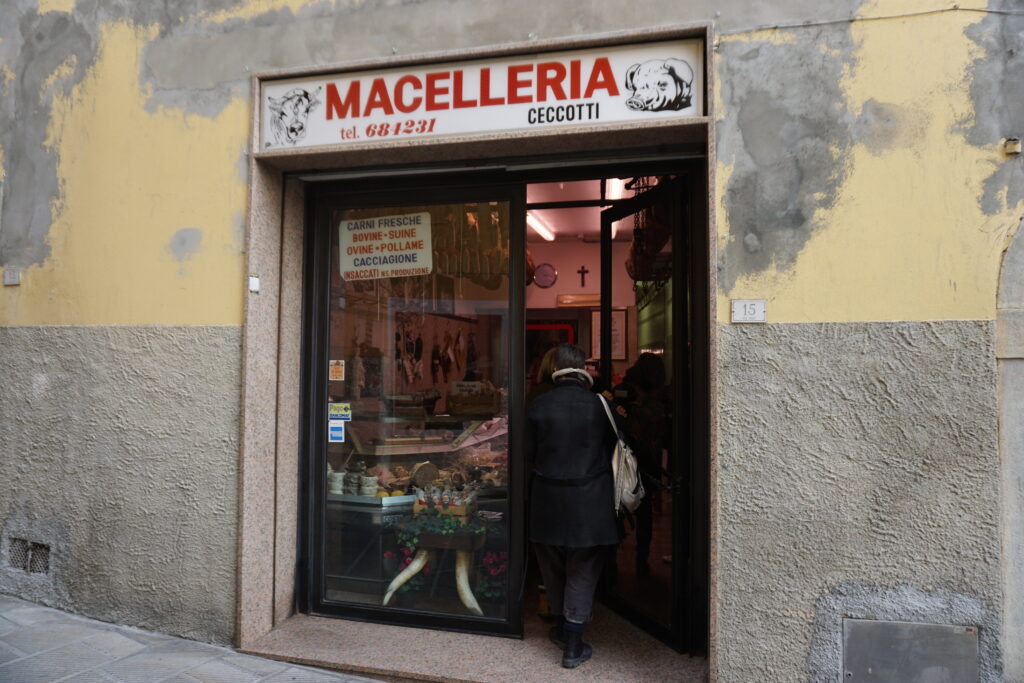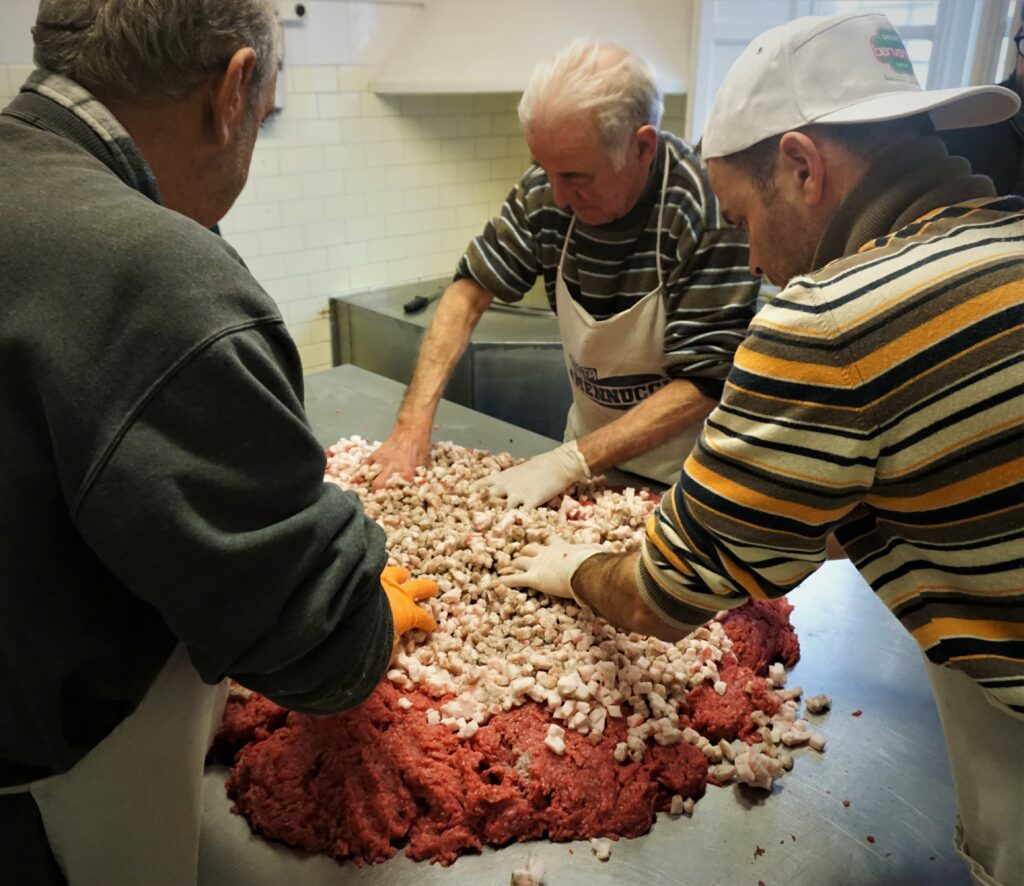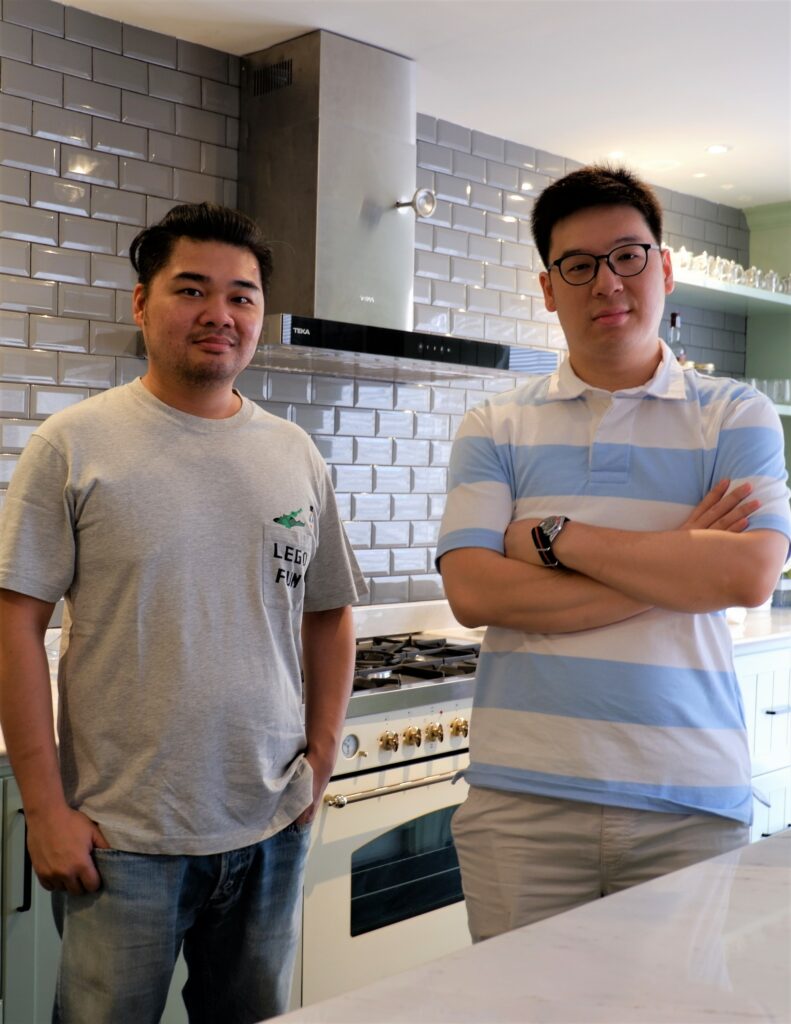Any anime lover would know about Bambino! More so if he/she is also a foodie. It is about a young chef named Ban Shogo, who bears a striking resemblance to the iconic Tin Tin, courtesy of a gravity-defying fringe flick. His passion is Italian food. What better way to chase his dream than to be thrown into the forefront of Tokyo’s Italian cuisine scene, the “it” establishment, Trattoria Baccanale?
But I’m not here to tell you about Bambino. Today I’m writing a story about Jonathan Tek, a young cook aiming to spark a new deli renaissance in Jakarta through his home-made guanciale, or smoked pork jowl, used in his signature pasta sauce, the carbonara pasta.
Jonathan Tek — the heart and soul of Jon’s Smokery — and I are standing in the kitchen of his private dining space, Privy, in South Jakarta. The eye candy includes a set of contemporary paintings, lovely bar pantry, kitchen with dozens of stainless-steel pots and pans, a powerful restaurant-caliber range, long dining table that perhaps has seated one (1) thousand guests from his secret dining.
Reinventing Authentic Carbonara: Guanciale & Pecorino (No Cream)
Just like Ban Shogo, Jonathan Tek started his dream in 2005, experimenting with pasta and sauces. His ten years of labors resulted in the reinvention of a classic Roman pasta —guanciale, pecorino cheese, and eggs carbonara.
“Getting access to the recipe itself was the hardest part, the cooking procedure is something that can be learnt. But implementing that recipe correctly and using the right meat cut is challenging.”
“Italian cooking is all about minimalism, using only the best quality ingredients — and really, what more do you need for pasta than guanciale, pecorino, and a good crack of black pepper? Certainly not onions or parsley,” he added.
Origins
Pasta alla carbonara (literally translated as ‘coal workers’ pasta’) is one of the most well-known and loved Italian delicacies: the creaminess of the eggs contrasting with the crispy guanciale makes it a pleasure to eat.
The origins of carbonara sauce are still uncertain. However, the recipe doesn’t appear until 1944, which prompts some speculations on how this delicious recipe came to be.
The most widely recognized theory is that this beloved Italian dish is an American adaptation of the traditional cacio e ova: when the Allied troops were stationed in Italy toward the end of World War Two, they got fond of pasta cacio e pepe, but to give them a “back home” flavor, they added smoked bacon to the recipe.
Roman people enthusiastically adopted the new dish, and quickly added it to their cooking. They swapped the bacon for guanciale (the fat from a pig’s cheek) as they already had pasta recipes using guanciale and Pecorino cheese, the other two being pasta alla gricia and bucatini all’amatriciana.
The multifaceted jewel of meat
Guanciale, pronounced {gwan-CHAH-leh) means two things: a headrest pillow, on which you repose your cheek when you retire to bed; and b) the wicked badass salt-cured pork cheek or jowl. Both terms are derived from the word guancia, which means Cheek.
Unlike the more familiar pancetta (salt-cured pork belly) with its equal streaks of meat and fat, guanciale, like my belly after festive eating, is mostly fat (cheeky, I know).
Guanciale is first prepared by rubbing the meat with salt and curing it for one month. After this step, the seasoning process starts and it usually changes from region to region, based on traditions and curing habits; but in general producers use pepper and spices such as thyme, fennel, coriander, and rosemary. After the Guanciale is air-dried and aged for at least 3 months, it’s ready to eat.
Until quite recently, guanciale was very hard to find outside of Italy. Even most American cookbooks hardly ever mention it. Almost all Italian recipes that originally use guanciale was translated or subbed in foreign cookbooks for ordinary bacon. But similarities aside (both are cured, salty, and fatty), bacon is not a good substitute, because it is smoked and contains sugar, neither of which are part of guanciale’s preparation—thus resulting in very different nuances of flavor.
Jon’s Smokery and the craft of Italian salumi
Jonathan Tek’s journey into the world of salumi, began in 2015 when he wanted to supply the finest quality of cured meat to restaurants in Jakarta. Not to be confused with salami dry cured sausages, salumi is the word for Italian salted and cured meats.
As a cook who wants to do everything from scratch, salumi was a challenge to make, even more challenging to perfect.
In February 2017, his passion led him to Tuscany, Italy, where he had spent time in the prep rooms of some of the best artisanal Norcini’s (pork butchers), making salami, curing hams, and learning the methods and traditions that have put them in the elite class of master curers.
He first learned the art and craft of salumi making with Massimo Bacci of Bacci 1925 Marcelai in Carrara. After that he continued his trip to Lari to learn with Macelleria Ceccotti, before ending his two weeks intensive master class with Da Severino in Lucca.
Arriving back in Jakarta, he sets off to produce a variety of cured and smoked meats in his kitchen, from pancetta and guanciale to smoked fish and sausages, before finally establishing Jon’s Smokery in December 2017.
A chance meeting with Stiven through a mutual friend led to his joining Jon’s Smokery as a business partner in 2019. Fast forward to today in 2020, Jon’s Smokery has established its name as a trusted supplier of cured meat and sausages for most Italian and fine restaurants in Jakarta.
The Future
“We’re extremely thrilled to announce our plan for the Jon’s Smokery Shop & Deli and can’t wait to open our doors to the public next year,” said Jon, in an excited manner.
Jon’s Smokery’s signature selections include home-cured sausages, cheese and dry aged meat.
In the meantime, Jon’s Smokery will continue to serve the customers who are looking for a quality eating experience via online ordering and delivery.
“If you want the next level dining experience, book a table with us at Privy. The meals here become an unusual experience, one that’s both intimate and convivial – shared, often times, with strangers,” Jon says, when I ask about it, “This place is to showcase our dry-aged beef appreciation menu.”
Food is non-conformist but infectious, designed to trigger feelings and sensations, spreading far beyond the borders of Italy and its culinary mores. Maybe what makes Jon’s Smokery and the cook himself unique, is this simple: he is all about emotions. Every dish has a story attached to it, unravelling over the course of several bites, or it may be intended to trigger a specific feeling, a moment or a memory.
So, buon appetito! Count the memories, not the calories.
Jon’s Smokery’s gourmet boxes for pasta, sandwiches, and salumi are available for prepaid order starting 17th December 2020, exclusively only on SELESA.
The Deets
| Location | Jon’s Smokery |
| Address | Jl. Dharmawangsa VI, Dhamawangsa Square, Jakarta Selatan |
| Opening Hours | Mon-Sun 09:00 – 17:00 |
| Phone | |
| @jonssmokery | |
| Type | Traditional cured, smoked meats producer & purveyor |


